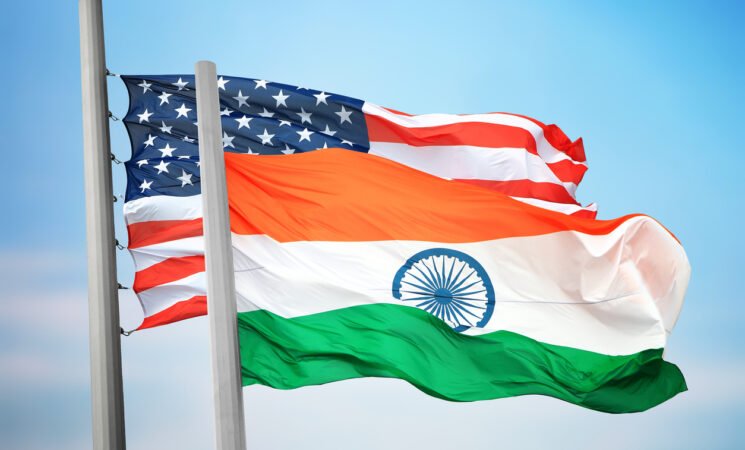25 August 2025, NIICE Commentary 11628
Yutsi Dotel
India has adopted a policy of trade protectionism with a selective approach, specifically within the agriculture industry, where the demands of domestic political dynamics, rural jobs, and farming override political promises of trade liberalisation. The Indian government aims to protect the income of small farmers and maintain national food security through income support schemes, tariffs, subsidies, and public stockholding programs. These policies are often challenged in international trade negotiations, but India still defends them under the legal loopholes of the World Trade Organisation (WTO) framework, mostly the AoA and other trade provisions on agriculture. The essence of India’s selective protectionism lies in the ongoing tensions between the multilateral trade obligations and the need to protect domestic agricultural priorities.
Indian Trade Relations with the US
The United States has repeatedly asked India to open its market, specifically in the agricultural area, by putting an end to tariff and non-tariff barriers. In August 2025, Washington declared that an additional 25% tariff would be applied to many Indian imports, and it will consider raising rates on selected products to 50% later in the month. This act was not simply limited to agricultural protectionism, but comprised a broader view of the wider frictions in the relationship, including India's ongoing purchase of discounted Russian crude oil, long-standing disagreements over dairy and poultry market access, and disagreements in policies pertaining to the regulation of digital trade. The new tariffs piled up on additional U.S. trade actions that were already imposed. The additional tariffs on Indian products have impacted Indian export industries, particularly in textiles, leather, and cotton yarn, forcing Indian goods to be less competitive in U.S. markets.
In response to price pressures, American importers have increasingly turned to suppliers in neighbouring economic competitors located in South Asia. For instance, the textile and apparel industry in Bangladesh has seen the largest growth in U.S. imports in 2025, taking advantage of the cost disadvantages imposed on Indian export goods. However, even in an environment of counter-productive measures, India has not backtracked on their tariff measures, but merely absorbed the tariff costs instead of dismantling the protectionist regime altogether. This context is even contrary to actions taken at the international level that ought to suggest cost-versus-benefit considerations to counteract the negative constraints put in place with an American-based agenda, but have only insinuated a harsher sanction against India.
Agricultural protectionism is not just a question of trade policy, but political and economic necessity, with over fifty percent of India's population being dependent on agriculture for their livelihoods, the state continues to argue that protections for farmers are needed for public stockholding, minimum support prices (MSP), and high tariff bindings on sensitive products for farmer welfare and food security as necessary and pre-emptive measures. India has argued constantly that these measures fall under the permissible use of the flexibilities in the WTO Agreement on Agriculture (AoA), especially under the special and differential treatment provisions that were prepared and recognised by members of the WTO. Moreover, the recent tariff increases imposed by the United States are unilateral measures rather than outcomes of negotiated WTO settlements. This means that even if India were to scale back its protective agricultural policies, there is no legal guarantee that Washington would reverse the heightened tariffs.
In response, New Delhi pursued two strategies: first, turning to the WTO’s dispute settlement mechanism, despite well-known limitations in enforcement; and second, seeking to diversify its export destinations so as to reduce dependence on the U.S. market. These responses underscore India’s deliberate prioritisation of domestic agricultural stability over short-term export competitiveness, even at the cost of shouldering additional tariff burdens.
Conclusion
India's selective protectionism, particularly in agriculture, indicates an ongoing struggle between multilateral trade commitments and domestic priorities. Despite the unravelling of the U.S. multilateral trading system, the U.S. tariff hike has unambiguously reduced the competitiveness of Indian exports within the U.S market. When food security and rural livelihoods are on the line, removing safeguards to prevent the tariff escalation is simply adding risk without any certainty the U.S. would remove its unilateral tariffs.
As India looks towards the future, it should plan its agricultural policies as much as possible around the WTO-sanctioned flexibilities, which bolster their legitimacy when the country argues its position in multilateral spaces. India should also look to diversify away from overreliance on the U.S. for export destinations, and to promote value-added domestic sectors that support diverse export markets and are less vulnerable to tariff escalation. By improving agricultural productivity, leveraging logistics and strengthening supply chain capacity, India will also be able to create a competitive basis that is more sustainable than reliance on tariff barriers. This will allow India to continue to critically rely on the absence of key protection for its farmers while simultaneously employing a trade strategy that incorporates resilience and adaptability to meet the pressures of today's global trading space.
Yutsi Dotel is a Research Intern at NIICE. She is currently pursuing her Master's in Legal Studies at South Asian University.

